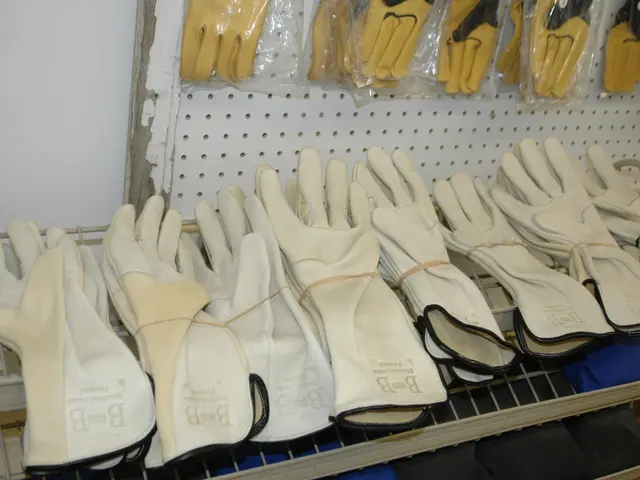Discussion Point: Is it necessary to establish a regulatory office temperature limit?
In the heart of the UK, as global temperatures continue to rise, a pressing issue has emerged in the realm of workplace regulations. The Workplace (Health, Safety and Welfare) Regulations 1992 dictate that employers must ensure a "reasonable" temperature during working hours, yet there is no legal upper limit to this standard.
This lack of a definitive maximum temperature has sparked concern, particularly during extreme weather events. Hayley Knight, the founder of Be Yellow, is among those advocating for change. "It's essential that we prioritise the wellbeing of our employees, especially in the face of increasingly frequent heatwaves," she says.
The Health and Safety Executive (HSE) recommends a minimum of 16°C for sedentary work and 13°C for environments involving rigorous physical activity. However, with no defined legal upper limit, employers are required to act if temperatures become uncomfortable or pose a health risk.
The Trades Union Congress (TUC) has proposed a maximum of 30°C for most indoor workplaces, or 27°C for jobs involving strenuous activity. They also suggest that employers should reduce temperatures above 24°C if workers feel uncomfortable. Yet, these recommendations are not currently law.
Callum Price, the director of communications at the Institute of Economic Affairs (IEA), notes that reducing the burden on businesses by lessening compliance costs can help stimulate job creation and wealth. He suggests that the installation of air conditioning in offices could be made easier by the government to aid temperature control.
Office workers have the flexibility to choose to work from home or a cooler public space if their office is too hot. In fact, with most office roles now able to be done remotely, this option allows productivity levels to be maintained while also ensuring employee comfort and wellbeing.
However, the lack of a legal upper temperature limit for schools contrasts with the potential for one in offices, which could be seen as further infantilization of UK workers. Commuting in extreme heat is also dangerous and leaves employees feeling unmotivated.
For neurodivergent people and those with sensory sensitivities, extreme heat can be especially overwhelming. High temperatures can lead to poor focus, dehydration, and exacerbate health conditions like asthma, heart disease, and menopause.
As the UK grapples with economic growth, it is crucial to consider the impact of heatwaves on productivity and employee morale. The calls for clearer legal protections are growing louder, and it remains to be seen whether the government will respond to the pressing need for a legal maximum working temperature limit.
- In light of climate change and its effects on extreme weather events, the need for clearer legal protections concerning maximum working temperatures, particularly in offices, is gaining traction to ensure employee health, wellness, and productivity in the science and business sectors.
- To address the ongoing concern regarding the impact of heatwaves on workplace wellness, Hayley Knight, the founder of Be Yellow, advocates for a legal maximum working temperature, as the current lack of a definitive upper limit can pose health risks to employees, especially during extreme weather events.
- Recognizing the potential benefits for both employees and businesses, various organizations, such as the Trades Union Congress (TUC) and the Institute of Economic Affairs (IEA), propose specific temperature limits, and suggest government initiatives like easing air conditioning installation to aid temperature control in workplaces, to boost job creation and wealth, while also ensuring a healthier and more comfortable work environment.




